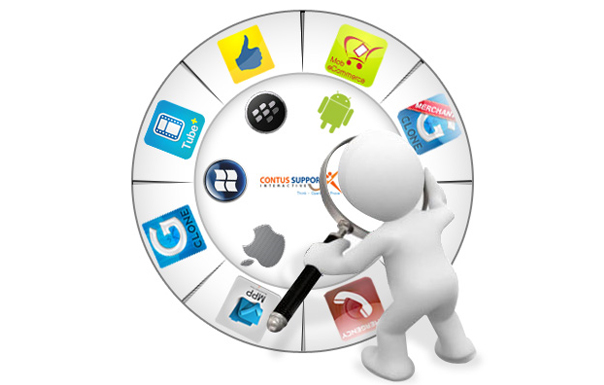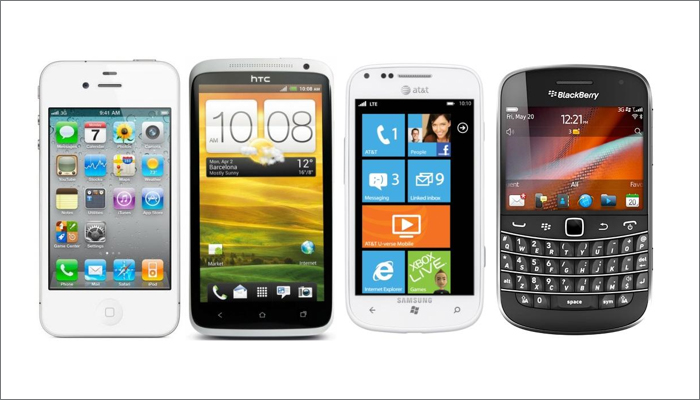With the increased usage of smartphones, tablets and other mobile devices, this industry is booming, so the mobile apps. Millions of people around the world simply can’t imagine their days without their mobile phones which they use for making calls, organizing business meetings, staying in touch with their friends via social networks, playing games and even tracking their heart rate and hundreds of other activities.
And this is all possible thanks to those innovative mobile applications. You want to turn on your AC before getting home? No problem, download the corresponding application and you’re good to go!
Today we have many key players in the mobile application world like Google Android, Windows Phone, Nokia etc. And, with the inception of App stores, mobile users were flooded with millions of applications. Lots of it! Just a quick fact before we begin – as of June 2014, there are approximately 1,200,000 apps in the iPhone App Store and 1,311,087 android apps in Google Play. However, with the sea of opportunity comes the greater tides of challenges. As users have multiple choices of platforms and applications to choose from, it’s a big challenge for developers and publishers to get their application downloaded. And, for getting good downloads, proper mobile application strategy is important.
Today, we are going to be talking about best checklists and points to be consider before making a mobile app.
If you are new in the mobile apps business, there are several things you need to know. This is a sort of a check list of all things you need to do to make your mobile app live, which will help you stay organized and on track.
First Step: Define your objectives and the planning

First, Draft a short time plan, which includes registration to the service you plan to use, device support, graphic assets etc. Sometimes, it takes several months until everything is ready, so make sure you set the date of release of your application so you can plan the entire process according to that.
Second Step: Target your audience

Whether you are developing application for your internal business use, use by other businesses, or use by individual consumers, you should have a good understanding of who your target audience is. That will help making design and technology decisions for your application. If you are targeting global audience, you may also have to consider making your mobile application multi-lingual.
Third Step: Name of the app

It is surely one of the most important elements in the entire process. In addition, don’t forget about the keywords potential clients would use to search for your application online. Including several keywords in the description is certainly wise, but before doing so, checks if there is an application with similar name or description to avoid confusion.
Forth Step: Choose your platform wisely

This is the most important decision you will ever make, there are plenty of options and again “all” is not the answer, at the moment Android and iOS are very popular, but that doesn’t mean you must go for them.Consider that all the features you want in the app may not be available in every platform and not all platforms are use by your final users. This decision will save you time, effort and money.
Fifth Step: Don’t rush,be dude perfect

Even if your competitors already have an iPhone app, don’t get pressured by your execs into rushing your app. Make sure you have developed the feature set that will excite your customers and make your app resident on the home page of their phone.
If you mess up with the first release and deliver a poor experience or worse, a slow or buggy app, not only will you damage your reputation with your customer base, but they will remove the app as quickly as they added it and you will lose your chance to impress them with later releases.
Sixth Step: Think about awesome UI/UX

Nowadays users lookup for the most easy to use and friendly apps that looks awesome in their new expensive smartphones. So, you should have a great design for your app.
But remember, do NOT use the UI/UX from one platform to another, users hate when they have an iOS device and the app look and feel like an Android one.
Seventh Step: Testing

Remember when we talked about target market & platforms? Well, it all comes to testing. Your app may work perfectly in your phone, but you must invest in testing it on many devices as possible. Some devices or OS versions can make your app not to function as you were expected and guess who is paying the consequences? That's right... The users.
The user could and will review/rate your app and there's no better or worse publicity than the given by the users or what is called mouth to mouth. You definitely don’t want to have a bad reputation with the users. So keep testing you app to prevent crashes.
Eighth Step: Plan for timely updates

Every application will need to undergo necessary updates but please set up clear priorities to update functionality or content every few months, NOT on a weekly basis. Requesting that users update your app on a constant basis is an indication that there are a lot of errors in your app or you don’t know what you’re doing. You will lose users’ interest and worse, risk having them use an outdated app that may not help your company’s bottom line.
Final Thought
As you can see it’s not as simple to go from the “napkin” sketch to the final product and ending up with the final app if you hadn't considered any of the above points. Creating a mobile app is like any other TI project, it needs planning, resources and time. So be patience and the result would be extraordinary.

